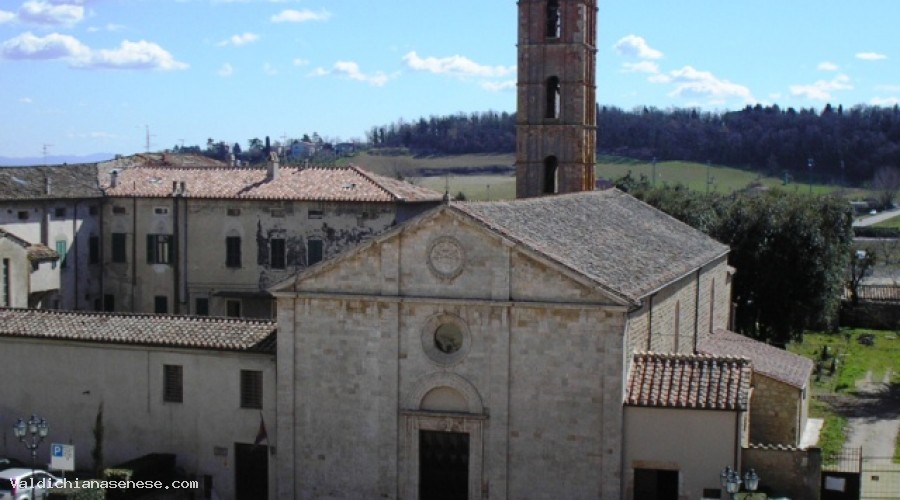Churches
San Francesco
SARTEANO
The entrance to the Church of Saint Francis is in Bargagli Square. The origin of this church dates back to early XVIth century. The Franciscan monks, who owned on the nearby hills the Hermitage of Saint Bartholomew in Solaia, founded by Saint Francis, settled there. The Cloister bears testimony to its XIVth century origin, not only thanks to a few Gothic elements, but also thanks toa precise date engraved on a capital (1341) and to the remainders of a IVth century fresco representing an Angel. In 1462 Pius II transferred the Convent to the Observantine Order, who badly tolerated the floor full of tombstones, so they had it covered and raised for more than a meter. In this way the door resulted divided in two and it was necessary the construction of a new facade, that was executed in1480 , thanks to the Archbishop of Siena, who later became Pope Pius III. Through the triple division of the surface, extended to the spandrel ,that has in its center the code of arms of the Piccolomini Family, and through the lines of the portal; this construction seems to recall through simple and modest shapes the spirit of Rossellino. The beautiful bell tower was also reconstructed in that period. The church itself, after various vicissitudes, has been restored. The interior with a single nave with a trussed ceiling is quite remarkable: the Triptych represents a Madonna with Child between Saint John the Baptist and Saint John the Evangelist. In the gable there’s an Annunciation, executed by Jacopo di Mino del Pellicciaio, known between 1344 and 1389, Sienese painter , who went from an original roughness in his paintings to a nobility of shapes.The entrance to the Church of Saint Francis is in Bargagli Square. The origin of this church dates back to early XVIth century. The Franciscan monks, who owned on the nearby hills the Hermitage of Saint Bartholomew in Solaia, founded by Saint Francis, settled there. The Cloister bears testimony to its XIVth century origin, not only thanks to a few Gothic elements, but also thanks toa precise date engraved on a capital (1341) and to the remainders of a IVth century fresco representing an Angel. In 1462 Pius II transferred the Convent to the Observantine Order, who badly tolerated the floor full of tombstones, so they had it covered and raised for more than a meter. In this way the door resulted divided in two and it was necessary the construction of a new facade, that was executed in1480 , thanks to the Archbishop of Siena, who later became Pope Pius III. Through the triple division of the surface, extended to the spandrel ,that has in its center the code of arms of the Piccolomini Family, and through the lines of the portal; this construction seems to recall through simple and modest shapes the spirit of Rossellino. The beautiful bell tower was also reconstructed in that period. The church itself, after various vicissitudes, has been restored. The interior with a single nave with a trussed ceiling is quite remarkable: the Triptych represents a Madonna with Child between Saint John the Baptist and Saint John the Evangelist. In the gable there’s an Annunciation, executed by Jacopo di Mino del Pellicciaio, known between 1344 and 1389, Sienese painter , who went from an original roughness in his paintings to a nobility of shapes.